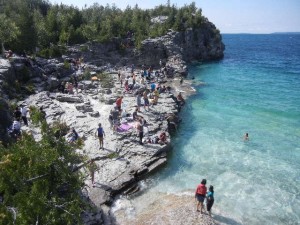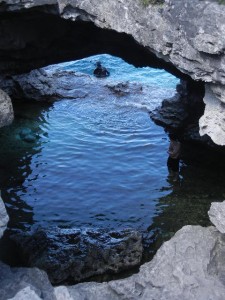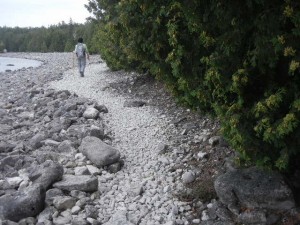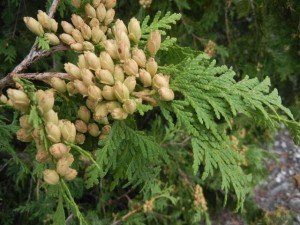3-4 September: After a ferry ride from Manitoulin Island to the northern tip of the Bruce Peninsula, we camped two nights in Bruce Peninsula National Park. The Bruce Trail, a public footpath following the edge of the Niagara Escarpment from the Niagara River to Tobermory (where our ferry landed), is over 550 miles long and passes through Bruce Peninsula National Park along the shore of Lake Huron’s Georgian Bay. The Niagara Escarpment was not formed by a fault, but rather by differential erosion in which the upper side was protected by a resistant layer of dolomitic limestone cap rock. Its most well-known feature is Niagara Falls, but there are many other stretches of prominent cliffs along its length.


Bruce Peninsula NP is one of the four most-visited of all Canadian national parks. There the Niagara Escarpment forms cliffs along the eastern (Georgian Bay) shoreline of the Bruce Peninsula. Although the cliffs rising from the lake are impressive, in places the submerged height is even greater. One particular formation in the park, The Grotto, has become such a popular tourist attraction that the park limited day-use visitors to four hours in the Grotto parking lot during the busy Labour Day weekend while we were there. The crowds thinned out considerably between Sunday, when we hiked past The Grotto, and Monday, when we hiked another section of the Bruce Trail along the shore (it turned rainy Monday, plus it’s a good half drive for folks returning to the metro Toronto area).

